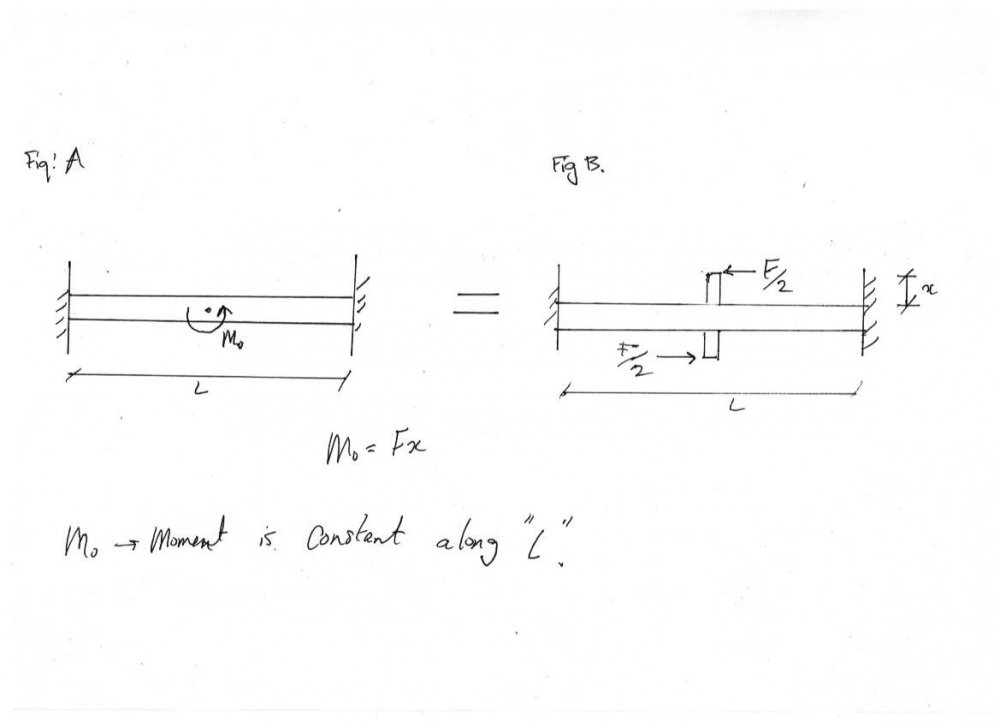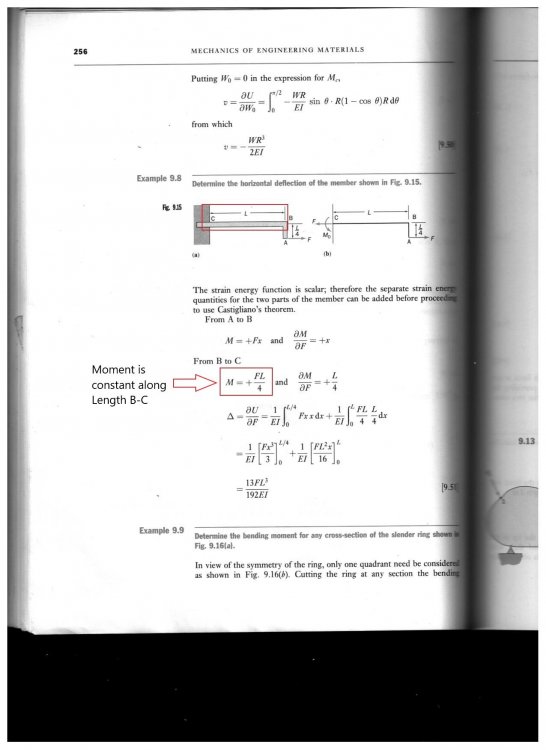-
Posts
36 -
Joined
-
Last visited
Profile Information
-
College Major/Degree
Mechanical Engineering
-
Favorite Area of Science
Mathematics, Cosmology
-
Occupation
Engineer/ Designer
psyclones's Achievements

Quark (2/13)
3
Reputation
-
Sure. It's an awkward shaped bracket. Concerns regarding cabling & access is not an issue. Thanks for your help. your right you can't do much without the drawings, and I can't provide them (again apologies). CCF_000006.pdf
-
Good point. My apologies, I can't give more info, Yes. I agree the code(s) goes into great detail about how to deal with different wall/ roof pressures and local area pressures on corners and around eaves of buildings. Sway becomes a significant problem for multi level buildings also. What information would you need?
-
As far as I know, there was no (physical) test model created. But, the code is very robust if applied properly. Structural Engineer's for domestic buildings (I know) rely on the Wind code not CFD modelling. This maybe of little importance, but I know once all loads were determined the structural analysis would have been designed using (Siemens) FEMAP. I have the (3D) CAD model. Yes. I reviewed the ASCE 7-16 for Wind loadings, and the American Standard (in some aspects) is very similar to the Australian. And Yes. "multiple fatalities if the structure failed" is correct. Maybe your right, due to where this structure will be mounted, Winds loads become a primary concern, so conservative loading would be ok, before applying SF. But; on second thought, if we take conservative loading as a given, could we/I just treat the whole structure as a Rectangular Prism (of which it would occupy <50% Vol). Then trying the calculate wind loads becomes much less cumbersome?
-
psyclones changed their profile photo
-
Hello, An Engineer I know determined wind loads for a small but rather odd shaped structure assembled from various standard steel sections. It's a frame attached to the topside of a stadium roof to suspend speakers. We have AS/NZS 1170.2 (Australian) Wind Code, which gives detailed tables to calculate drag co-efficient’s for standard members. But my problem is this; Even if the sum of all areas and co-efficient’s were calculated, the wind loading (on any given face) would be incorrect, or very conservative! Due to the standard only applying to individual members. *Wouldn’t be easier to use a CFD package to model the wind loading, the wind velocities (per direction) can be easily found in Aust. Standard? O/A approx. dimensions; 1300mm x 370mm x 670 mm, Steel sections include; 100mm sq hollow section, 50x50x5 equal angles. 12mm and 16mm thick plates to mount speakers & structure existing rafters. I’ve very hesitate to provide an image of model due to confidentially. Which I realise without it could make it difficult to get an idea of the structures geometry.
-
The lecturer has posted a solution to solving the problem using the above method with only a vertical force. Problem solved. But upon reflection, I looked at a textbook & the only problems (MDM) which include frames & horizonal forces took sway (or horizontal deflection) & principle of superposition into account to solve the problem.
-
Hello, I have question is with applying Moment distribution method in calculating moments in a frame with two forces; one vertical & one horizonal. (Please see attached) No sway is assumed. It's a frame i.e; joints B & C are fixed. My lecturer has included an example with moments created from both vertical & horizontal forces applied to frame. Then he goes on to say (in an email) that the Moment distribution method can't be used to calculate horizontal forces, only vertical forces I have spent time trying to email the Lecturer & Tutors about this problem and they won't even take the time to read my email(s) properly and look at attachments & answer my questions to give me any real clarity. I would like to know (if anyone can tell me) if it's possible to solve the attached problem with two forces in a single Moment distribution method table? Otherwise how can I solve it using this method?CCF_000013.pdf I've created an excel spreadsheet and can't get the numbers to work.
-
Ok. so yes, moment varies along beam for applied point load & couple is uniform along beam. text: Mechanics of Engineering Materials (Benham. Crawford & Armstrong), 2nd Ed. Attached is actual problem, I'm trying to model. A Caster wheel causing a moment in a plywood box-cart base. I'm wanting to determine the stress at bottom edge of board where it meets the pivot axle. But to do that I need to determine where the N/A is. Of maybe I'm going about his the wrong way.
-
Hi all, This is most likely a silly question. Can a moment anywhere along a beam be equivalently modelled as to two small blocks welded @ 90deg to original beam and have coupling loads applied? (See hand sketch attached) Can this type of moment be constant or uniform along the beam because point loads are parallel? I've attached a Text book example showing the Moment being constant along Section B-C of beam due to load being parallel to that section. While Section A-B the moment varies as a function of distance. I'm just trying to get a better understanding of the difference btw moments along a beam, and a moment created due to a perpendicular point load. Or are moments just moments, which are caused by any sort of bending? It's not a simple example - it's using Complementary Strain Energy (theorem) to calculate displacement - if anyone's curious. But I'm only interested in how the text has derived the moment equations for the two contrasting sections. NOTE: Distance "x" should be "x/2" (hand sketch)
-
I realise I have not been as involved in the discussion as every one else. I may have created the thread, but in my opinion I'm not the "Arbitor" of the thread, people can say what they want. All insights and comments are welcome! I realised I read you post it out of context - So again, sorry.
-
This statement was NOT aimed at you studiot. It was talking about at the guy who told me the story - which I realize now maybe I shouldn't have mentioned. Knowing the details of the problem I think is sort of beside the point. What I was trying to find is simple conceptual flaw in the screw design – if there was one. You don't have to insult me.
-
My apologies I haven't chimed in yet. (I need to switch on notifications from this forum if that possible). To answer your question studiot, I don't have any more information - this was just a story told to me. What made me question it was the credentials of the guy who designed it, who I'm guessing know very little if anything about fluid mechanics. I just thought it was a very interesting problem. But as the discussion has unfolded - modelling the drain pipe as an open channel flow can get quite tricky. So details an assumptions about the problem are critical to solving it, which is what I thought. But thank-you all.
-
Hi, Someone told me after building a multi storey building. In one section of the building existing downpipe(s) weren't effective at transferring water from roof to ground level - water I believe was pooling on roof. To solve this, a screw design (see attached) downpipe was created. The screw design supposedly helped suck the water down the pipe. There are two problems that appear to me straight away: 1. The velocity ignoring frictional losses down the screw design would be less because gravity forces are not pulling the liquid straight down, the smaller the incline (from horizontal) the slower the inlet velocity of liquid. 2. The internal screw sheeting and core structure subtracts volume the flow could occupy in the straight downpipe, effecting flow rate. Or course this is highly simplified and I'm unsure of how centrifugal effects on water flow swirling around would affect flow rate and head losses. There would be higher head losses per length of pipe, but I'm unsure if those losses would lower inlet pressure to below that of free falling water flow. Trying to fabricate and even clean would be just short of a nightmare. Although I think its novel an interesting idea, but I can’t see the design would be more effective than a standard downpipe? Like I said this was just a story, I didn’t actually get to see this. I’ve attached cad model of how I think it would work. What are your thoughts?
-

Relations between numbers in a squence.
psyclones replied to psyclones's topic in Analysis and Calculus
Ok that's interesting. I can only find as copy of Principia Mathematica at the University library, of which I'm not a current member. -
There’s a reference in Bertrand Russell's book: Analysis of matter, pg 3, third paragraph - continuing onto Pg 4. He talks about R as relating a term to its successive term in a sequence - using the sum of first "n" odd numbers equaling n^2 as an example. I'm not sure how he defines "R" to start with in this example. Then introduces Rxn, which relates a sequence of numbers together?? I'm not sure if I'm reading his notation correctly. Any input on this passage would be helpful. There is link to the book below. http://strangebeautiful.com/other-texts/russell-anal-matter.pdf


.thumb.jpg.10a14e2bb8f70f3e8fe5dd433f386a58.jpg)
.thumb.jpg.84175d3c8cba68e3337c21fbeda9c7d1.jpg)


.thumb.jpg.5c9f722b300268a1ac466d6ce5e8104f.jpg)